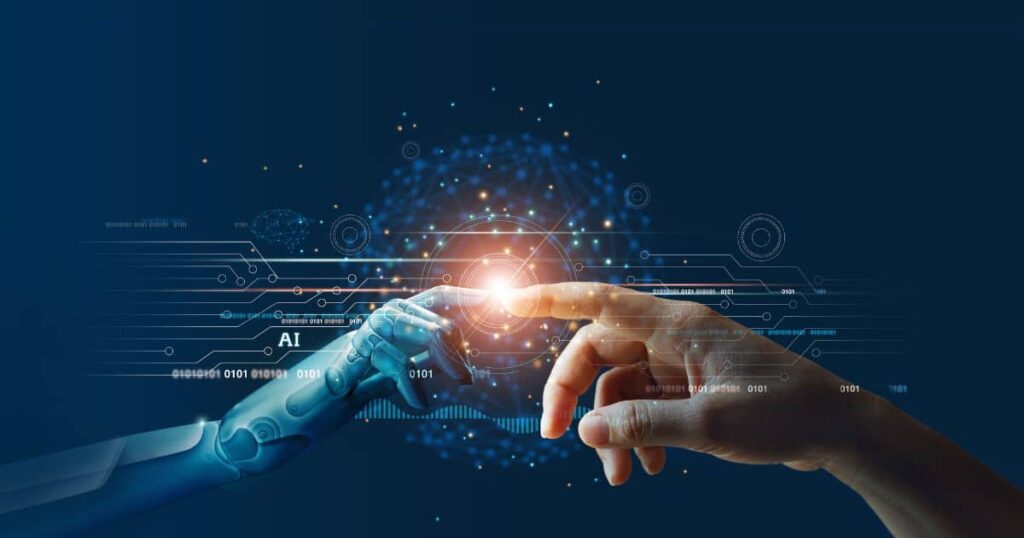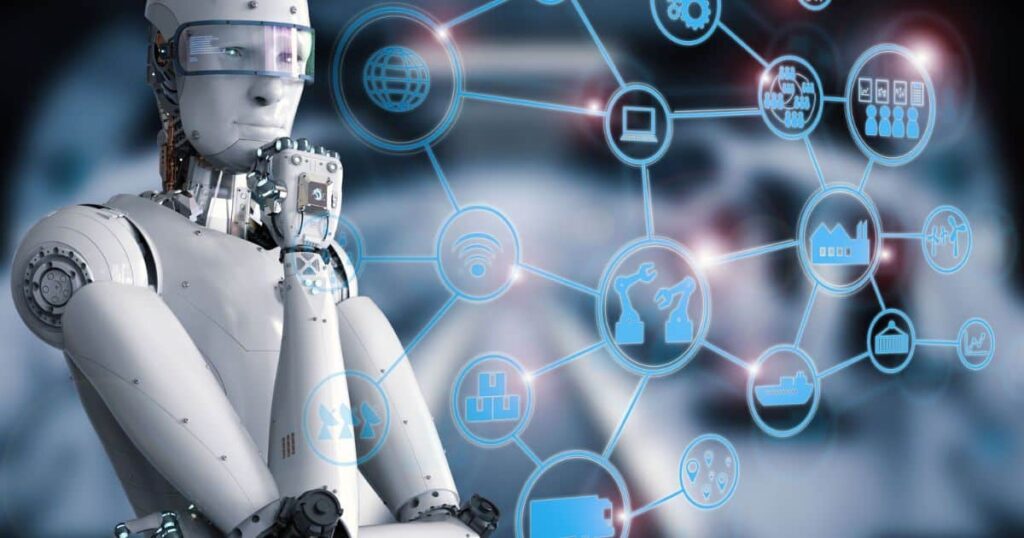In our rapidly evolving world, technology stands as a catalyst for unprecedented change and innovation. The march of progress, driven by human ingenuity, has accelerated exponentially in recent decades, propelling society into an era defined by remarkable technological advancements. These innovations transcend mere gadgets; they encompass the very fabric of our daily lives, reshaping how we live, work, communicate, and interact with the world around us.
In this comprehensive exploration, we will delve into four key technological drivers that are not only propelling us into the future but also influencing the course of human history. These drivers are Artificial Intelligence and Machine Learning, Renewable Energy and Sustainability, Biotechnology and Healthcare, and the Internet of Things (IoT).
Artificial Intelligence and Machine Learning

Artificial Intelligence (AI) and Machine Learning (ML) are at the forefront of the technological revolution. These fields have witnessed unprecedented growth, driving innovation across industries, from healthcare to finance and beyond. AI and ML systems are designed to mimic human intelligence, enabling them to analyze vast datasets, make predictions, and automate tasks with unparalleled precision.
This section will delve into the evolution of AI and ML, exploring their historical roots, current applications, and the profound implications they hold for society. AI and ML have come a long way since their inception. The roots of AI can be traced back to ancient civilizations’ myths and legends, where automatons and mechanical creatures captured the human imagination.
However, it wasn’t until the mid-20th century that AI research truly began, with pioneers like Alan Turing and John McCarthy paving the way for the development of intelligent machines. Fast forward to today, and AI has infiltrated nearly every aspect of our lives, from voice-activated personal assistants to self-driving cars. One of the most striking aspects of AI and ML is their ability to continuously learn and adapt.
Unlike traditional computer programs, which follow rigid sets of instructions, AI systems can refine their performance over time by processing and learning from large volumes of data. This adaptability has led to groundbreaking applications, such as natural language processing, computer vision, and recommendation systems. AI-driven technologies like chatbots and virtual assistants have revolutionized customer service and personalized user experiences.
However, the rise of AI is not without its challenges. Ethical concerns surrounding AI decision-making, privacy issues related to data collection, and the potential for job displacement have sparked intense debate. Moreover, the development of autonomous AI systems, such as self-driving cars, raises questions about safety and accountability.
Renewable Energy and Sustainability
The pressing need for sustainability in an era marked by climate change and environmental degradation has catalysed significant advancements in renewable energy technologies. As societies across the globe grapple with the imperative to reduce greenhouse gas emissions and transition to cleaner energy sources, innovative solutions have emerged.
From solar panels that harness the power of the sun to wind turbines that harness the energy of the wind, these technologies are reshaping the way we power our world. In this section, we will explore the growth of renewable energy sources, their economic viability, and the global efforts to transition to a sustainable energy future.
The journey towards renewable energy is one that spans decades. Early innovations in renewable energy, such as the development of the photovoltaic cell and the construction of the first wind turbines, laid the foundation for what would become a global energy transition.
Today, renewable energy technologies have reached unprecedented levels of efficiency and affordability. Solar energy, in particular, has seen dramatic growth. Solar panels, which convert sunlight into electricity, have become a common sight on rooftops and solar farms. The falling cost of solar panels and advancements in energy storage solutions have made solar energy more accessible and reliable than ever before.
Wind energy has also experienced significant expansion, with towering wind turbines dotting landscapes in regions with favorable wind conditions. One of the critical advantages of renewable energy sources is their environmental sustainability.
Unlike fossil fuels, which release carbon dioxide and other pollutants when burned, renewable energy generates electricity without harmful emissions. This makes renewable energy an essential component of global efforts to combat climate change and reduce air pollution.
However, the transition to renewable energy is not without its challenges. Intermittency, the fluctuation in energy production from sources like wind and solar, poses a grid reliability issue that requires innovative solutions, such as advanced energy storage technologies and grid management systems. Additionally, the transition away from fossil fuels has economic implications, particularly in regions heavily reliant on the fossil fuel industry.
Biotechnology and Healthcare

Biotechnology is another technological force that is driving revolutionary advancements, particularly in the realm of healthcare. The convergence of biology and technology has unlocked new frontiers in disease prevention, treatment, and diagnostics.
From personalised medicine tailored to an individual’s genetic makeup to gene-editing techniques that hold the promise of eradicating hereditary diseases, biotechnology is reshaping the landscape of healthcare. In this section, we will delve into the ethical considerations surrounding biotechnology, its role in global health, and the potential for transformative medical breakthroughs.
The roots of biotechnology can be traced back to ancient civilizations, where humans engaged in rudimentary practices such as fermentation and selective breeding of plants and animals. However, the modern era of biotechnology began in the mid-20th century with the discovery of the DNA double helix and the development of recombinant DNA technology.
These breakthroughs laid the groundwork for manipulating genes and molecules at the molecular level. Today, biotechnology encompasses a wide range of applications, from the development of genetically modified crops that can withstand harsh environmental conditions to the production of life-saving pharmaceuticals through biomanufacturing.
However, one of the most promising and controversial areas of biotechnology is gene editing, which allows scientists to modify the DNA of organisms, including humans. The potential of gene editing is vast. It holds the promise of curing genetic diseases, enhancing human traits, and even eradicating certain illnesses by altering the genetic code responsible for their onset.
Yet, these possibilities also raise profound ethical questions about the limits of human intervention in the genetic makeup of individuals and the broader implications for society. Furthermore, biotechnology has played a pivotal role in addressing global health challenges. The development of vaccines, such as those for COVID-19, has demonstrated the rapid advancements in biotechnology that can save lives on a global scale.
Biotechnology also offers hope in the fight against diseases like cancer, where targeted therapies are being developed to attack cancer cells while sparing healthy tissues. Despite these promising developments, ethical considerations in biotechnology are paramount. Issues surrounding genetic privacy, the potential for designer babies, and access to biotechnological advancements must be carefully addressed. Additionally, the regulatory frameworks governing biotechnology require constant adaptation to ensure that innovation aligns with societal values and safety standards.
The Internet of Things (IoT)
The Internet of Things (IoT) represents a transformative force in the realm of connectivity and automation. In an increasingly interconnected world, the IoT has given rise to a web of smart devices, systems, and sensors that communicate and collaborate seamlessly. From smart homes that adjust lighting and temperature based on user preferences to autonomous vehicles that navigate traffic and reduce accidents, IoT technologies are changing the way we live, work, and interact with our environment.
In this section, we will investigate the growth of IoT, its impact on efficiency and convenience, and the cybersecurity challenges it presents in a hyper-connected world. The concept of the IoT has its origins in the early days of the internet, where the idea of interconnected devices was first explored. However, it wasn’t until the 21st century that the IoT truly began to take shape.
Advancements in wireless communication technologies, the miniaturization of sensors and processors, and the ubiquity of high-speed internet connections laid the foundation for a world where everyday objects could be connected to the internet. Today, IoT devices are pervasive, from smart thermostats that learn user preferences and optimize energy usage to wearable fitness trackers that monitor health metrics. The industrial sector has also embraced IoT, with applications in smart manufacturing, logistics, and agriculture.
These technologies promise increased efficiency, reduced resource consumption, and improved safety. One of the most significant advantages of IoT is its potential to enhance convenience and quality of life. Smart cities, for example, utilize IoT sensors to optimize traffic flow, reduce energy consumption, and enhance public safety. Similarly, healthcare benefits from wearable IoT devices that can monitor vital signs and detect health issues in real-time, improving patient outcomes.
However, the proliferation of IoT also raises concerns, particularly in the realm of cybersecurity. The interconnected nature of IoT devices means that they can be vulnerable to cyberattacks. Security breaches can have far-reaching consequences, from compromised personal data to the potential for IoT devices to be used as tools in large-scale cyberattacks. Moreover, the collection and use of vast amounts of data generated by IoT devices raise important privacy questions.
As IoT becomes more integrated into daily life, the balance between convenience and data privacy must be carefully considered. Regulatory frameworks and industry standards are evolving to address these concerns, emphasizing the need for robust security measures and transparent data practices.
Ethical and Societal Implications
While these four technological drivers—AI and ML, renewable energy and sustainability, biotechnology and healthcare, and the IoT—hold immense promise, they also raise complex ethical and societal questions. The intersection of technology and humanity necessitates careful consideration of privacy, security, and the potential for job displacement. In this section, we will explore the ethical dilemmas and social consequences associated with these technologies.
One of the central ethical dilemmas posed by these technologies revolves around privacy. As AI systems and IoT devices collect vast amounts of data, questions arise about who has access to this data and how it is used. Concerns about data breaches, unauthorised surveillance, and the potential for data to be used in ways that harm individuals or communities underscore the importance of robust data privacy regulations and cybersecurity measures.
Additionally, the use of AI in decision-making processes, such as hiring algorithms or predictive policing, raises concerns about bias and fairness. AI systems can inherit biases present in the data used to train them, potentially perpetuating discrimination and inequality. Ensuring that AI is designed and trained with fairness and transparency in mind is an ongoing challenge for the technology industry.
Furthermore, the potential for job displacement due to automation driven by AI and robotics is a societal concern. While automation has the potential to increase efficiency and reduce labor-intensive tasks, it also has the potential to disrupt employment in certain industries. Preparing the workforce for the transition to a more automated future and ensuring access to education and reskilling opportunities is a critical societal imperative. The ethical considerations surrounding biotechnology are equally profound.
The ability to edit genes, while holding the promise of eradicating genetic diseases, raises questions about the limits of human intervention in the genetic code. Ethical debates over issues like designer babies, genetic enhancement, and the potential unforeseen consequences of gene editing continue to unfold.
In the realm of renewable energy, questions of environmental ethics and sustainable development come to the forefront. Balancing the need for clean energy with the potential environmental impact of renewable energy infrastructure, such as wind farms and solar installations, requires careful consideration and planning.
Conclusion
The four technology drivers discussed in this article—Artificial Intelligence and Machine Learning, Renewable Energy and Sustainability, Biotechnology and Healthcare, and the Internet of Things—are not isolated trends but interconnected forces shaping the future of our world. They represent the culmination of human ingenuity, scientific discovery, and technological innovation.
AI and ML hold the promise of transforming how we work and live, but they also demand careful ethical considerations to ensure that they benefit society as a whole. Renewable energy and sustainability offer a path to a greener planet and a more sustainable future, but they require ongoing commitment and innovation to address challenges such as energy intermittency and economic transitions. Biotechnology has the potential to revolutionize healthcare and human biology but must be guided by ethical principles to ensure responsible use.
The IoT is reshaping our world through interconnected devices, yet it poses security and privacy challenges that require vigilance. As we stand at the nexus of these technological drivers, it is imperative that we approach them with both enthusiasm and caution. Responsible innovation, ethical considerations, and inclusive decision-making are essential to harnessing the full potential of these technologies.
By doing so, we can build a future that is not only technologically advanced but also equitable, sustainable, and compassionate—a future that benefits all of humanity and the planet we call home.




